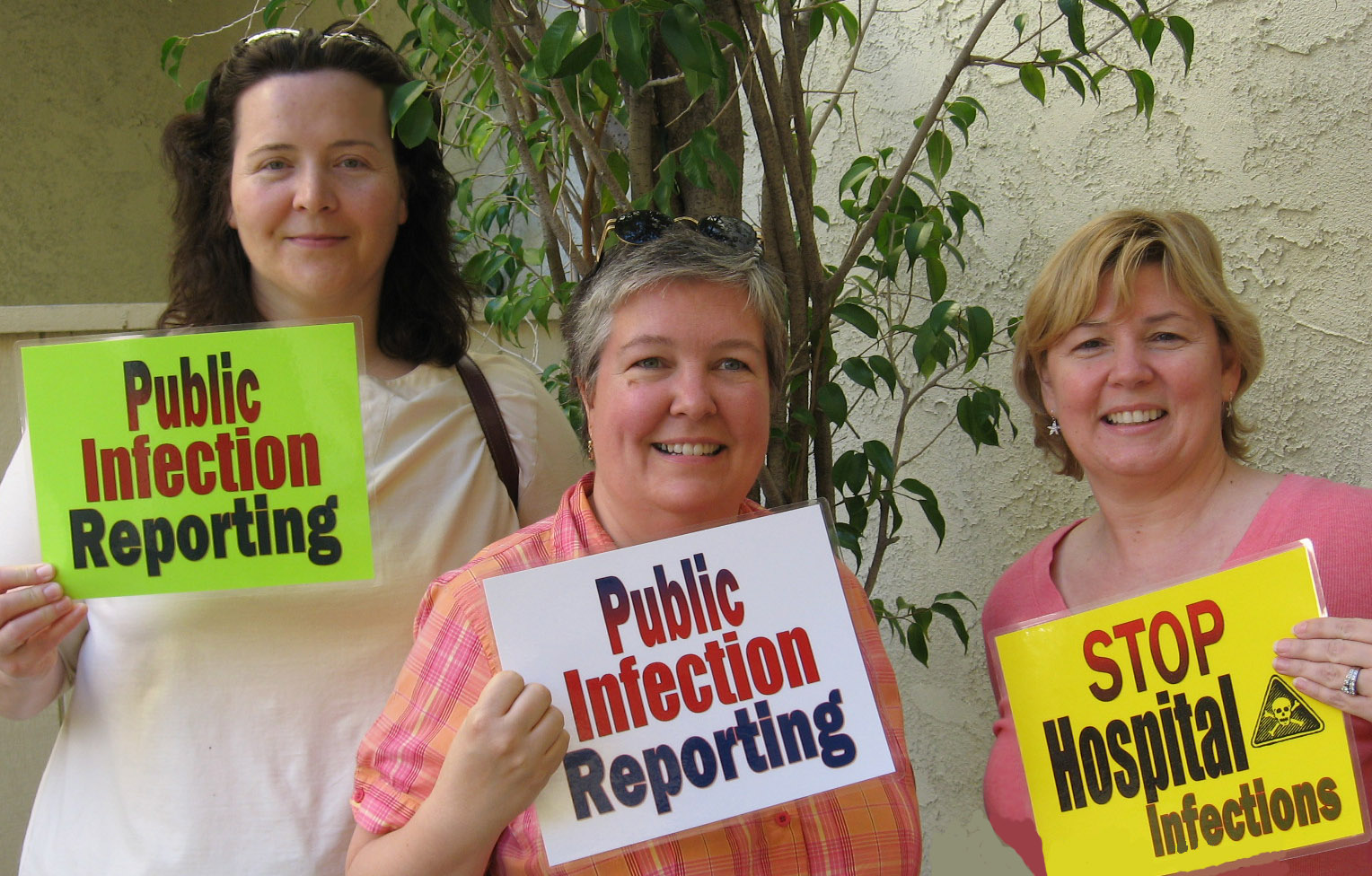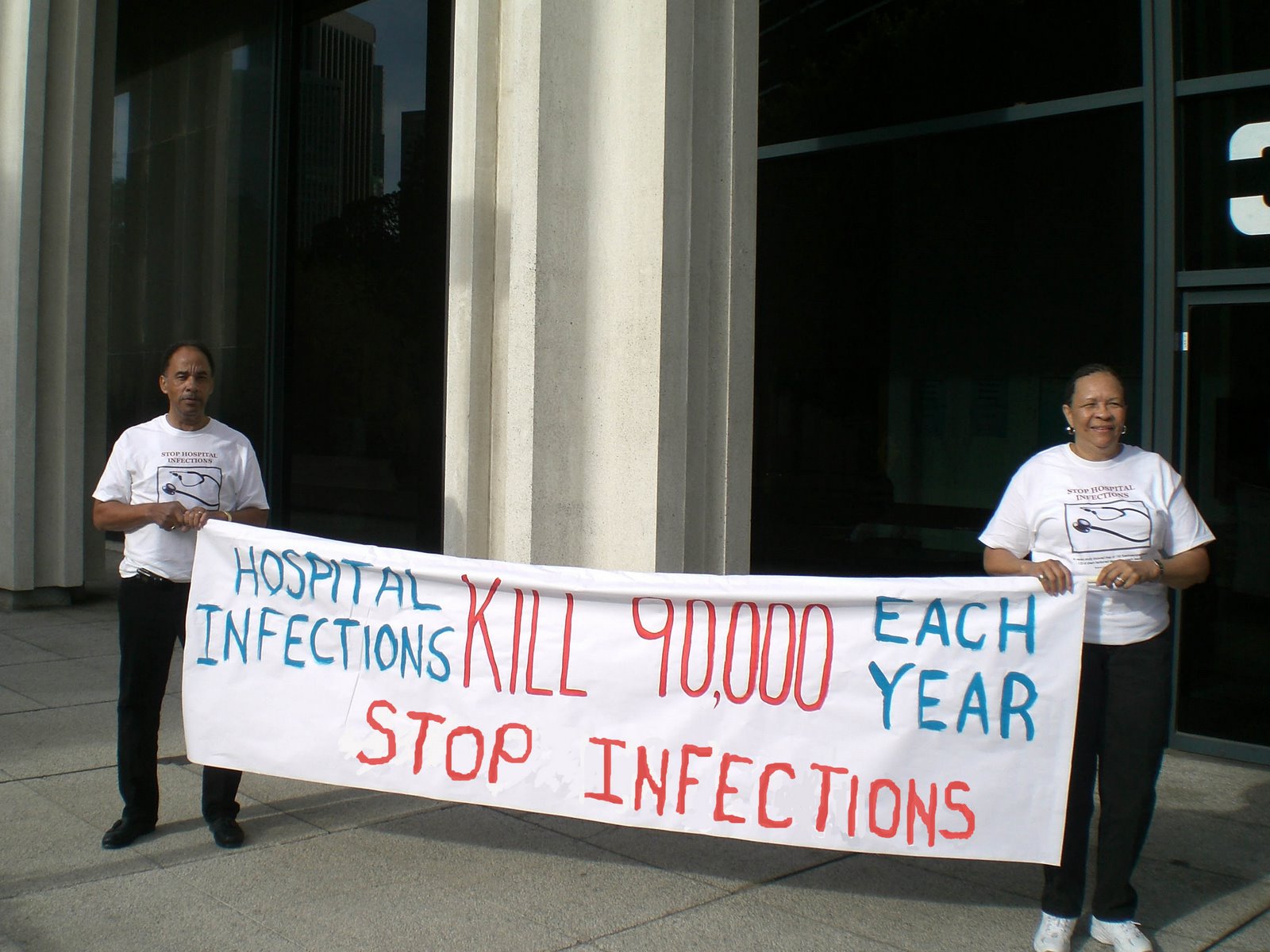Emma Hitt, PhD
March 23, 2010 (Atlanta, Georgia) — Hospital-onset healthcare-facility-associated Clostridium difficile infections (CDI) have increased in incidence and have surpassed methicillin-resistant Staphylococcus aureus (MRSA) infections, according to a new study of a large cohort of patients from community hospitals.
Becky A. Miller, MD, an infectious disease fellow from Duke University in Durham, North Carolina, presented the findings during an oral session here at the Fifth Decennial International Conference on Healthcare-Associated Infections 2010.
"This is the first time this has been described using patient-level data (i.e., with the number of cases as the numerator and the number of patient days as the denominator)," Dr. Miller told Medscape Infectious Diseases.
"We think this trend, particularly in community hospitals, would not have been captured without our large network of 39 hospitals where we perform infection control and surveillance," she said. "We were also unaware that cases of nosocomial C difficile infection had increased and surpassed MRSA."
The researchers performed a prospective cohort study in 28 community hospitals participating in the Duke Infection Control Outreach Network between January 2008 and December 2009.
The cohort consisted of 3,007,457 patient-days. Numerically, nosocomial CDI was the most common healthcare-associated infection (847 cases), followed closely by nosocomial bloodstream infection (838 cases).
Nosocomial infections due to MRSA and intensive care unit device-related infections were approximately equal, at 680 and 681 cases, respectively.
Patients with nosocomial CDI (n = 840) and nosocomial MRSA (n = 655) were equally likely to be male, and to have diabetes or end-stage renal disease requiring hemodialysis. However, patients who developed nosocomial CDI were, on average, older than patients who developed nosocomial MRSA infection (65 vs 59 years; P < .0001). In addition, time to infection was, on average, 8 days for CDI and 7 days for MRSA infection (P < .0001), and overall mortality was higher among patients with MRSA infection than CDI (P < .0001).
The rate of nosocomial CDI was 0.28 cases per 1000 patient-days, whereas the rate of nosocomial MRSA infection was 0.23 cases per 1000 patient-days. Thus, nosocomial CDI occurred 25% more frequently than nosocomial MRSA infection.
Since 2007, rates of healthcare-associated MRSA infection have steadily decreased, whereas rates of CDI have increased, Dr. Miller said during her presentation.
According to Dr. Miller, C difficile spores are shed in stool, and these spores can persist in the hospital environment for months. "These infections are not being prevented by methods that are clearly working to prevent nosocomial infections due to MRSA," she said. She added that "we think that this study represents the tip of the iceberg, as we did not include nosocomial C difficile cases diagnosed after patients leave the hospital."
In another presentation on C difficile, researchers described a targeted strategy to eliminate C difficile using ultragermicidal bleach wipes. Robert Orenstein, DO, from the Mayo Clinic in Rochester, Minnesota, reported the findings here in a poster session.
"The beauty of this project was that implementation was relatively simple — it required putting together a committed team and emphasizing our goal of improving patient outcomes," Dr. Orenstein told Medscape Infectious Diseases.
The researchers targeted 2 units with a focused intervention of daily cleaning of all patient rooms with Clorox brand ultragermicidal bleach wipes containing 6.15% sodium hypochlorite, and cleaning after the patient had been discharged.
Cleaning was assessed by environmental services supervisors, and Clean-Trace technology was used. Patients and environmental services employees who cleaned the rooms responded to a survey regarding satisfaction and tolerance of the cleaning procedure.
Before the intervention was initiated, the incidence of CDI was 18.4 per 10,000 patient-days; after the intervention was initiated, the incidence was 3.76 per 10,000 patient-days, "far exceeding" their goal of a reduction in incidence of 30%, Dr. Orenstein said.
According to the authors, patients tolerated the cleaning well, and although environmental services "employees initially had concerns regarding odor and irritation, these were resolved." The cost of the intervention was estimated at $18,671 per year.
"I am struck by the fact that our highest-risk unit has gone 6 months without a hospital-acquired case attributable to their unit, despite the fact that the overall incidence (i.e., cases admitted with this infection) continues to rise," Dr. Orenstein said. "This suggests what we did really had a great impact," he added. "This is especially gratifying knowing the impact that C difficile disease can have on our patients lives."
"C difficile has been in the news for the last decade," said Carlene A. Muto, MD, medical director for infection control at the University of Pittsburgh School of Medicine in Pennsylvania. "What has taken focus this year is that the environment matters," she said.
According to Dr. Muto, an analysis by their group presented in the late-breaking session described the undetected reservoir in patients who asymptomatically carry C difficile (~6% of the patients tested).
"Many studies have described noncompliance with cleaning patient rooms and how a focused effort can change this behavior," Dr. Muto told Medscape Infectious Disease. "Our group implemented a bleach/detergent cleaning program years ago, but since June 2009, we have used this product on every surface, every time, not just in the rooms of patients known to be positive."
She noted that "patients not known to be colonized/infected one day may be so the next. We did see a decrease in C difficile healthcare-associated infections using this approach."
Neither study was commercially funded. Dr. Miller, Dr. Orenstein, and Dr. Muto have disclosed no relevant financial relationships.
Fifth Decennial International Conference on Healthcare-Associated Infections (ICHAI) 2010: Abstract 386, presented March 20, 2010; Abstract 142, presented March 19, 2010.
Showing posts with label hand hygiene. Show all posts
Showing posts with label hand hygiene. Show all posts
Sunday, April 11, 2010
Tuesday, October 6, 2009
Safety Gurus: Penalize Doctors Who Don’t Follow the Rules
 October 1, 2009, 3:50 PM ET
October 1, 2009, 3:50 PM ETBy Laura Landro
Should hospitals start penalizing doctors and nurses who fail to follow patient safety rules?
That’s one solution proposed by Peter Pronovost of Johns Hopkins and Robert Wachter of the University of California at San Francisco. Writing in the New England Journal of Medicine, the doctors contend that the failure to hold clinicians accountable for patient safety is the main reason health care is still riddled with errors, adverse events, and just plain non-adherence to some of the most basic rules.
(Compliance with hand hygiene rules ranges from 30% to 70% at most hospitals, and few have sustained rates over 80%, the authors note, while there are about 4,000 wrong-site surgeries in the U.S. annually despite a universally accepted protocol for preventing them.)
In the decade since the Institute of Medicine’s landmark “ To Err is Human” report, which estimated that up to 98,000 people a year die of medical errors, many hospitals have embraced a “no blame” model: Instead of focusing on a single individual to blame for a mistake, they’ve tried to set up systems to prevent mistakes, catch them before they cause harm, or mitigate harm from errors that do reach patients. That’s all well and good if it works, but many hospitals are now finding that a blame-free culture creates its own safety risks, Pronovost and Wachter write.
Punishments such as revoking privileges for a chunk of time tend to be used for administrative infractions that cost the hospital money – things like failing to sign the discharge summaries that insurance companies require to pay the hospital bill. By contrast, hospital administrators may just shrug their shoulders when it comes to doctors who fail or refuse to follow rules like a “time out” before surgery to avoid operating on the wrong body part.
Docs and nurses who fail to follow rules about hand hygiene or patient handoffs should lose their privileges for a week, Pronovost and Wachter suggest. They recommend loss of privileges for two weeks for surgeons who who fail to perform a “time-out” before surgery or don’t mark the surgical site to prevent wrong-site surgery.
Pronovost — best known for his development of medical checklists designed to improve patient safety — tells the Health Blog that he still sees a tremendous amount of “pushback” when he speaks to doctors. Many still resist checklists and don’t feel bound by hand washing rules, even though they’ve been shown to prevent harm to patients.
“Some of these doctors just come to the meetings to throw spears at me,” he says. “We know how important these things are for patient safety, but there needs to be some accountability for infractions,” he adds. The suggested penalties “are an attempt at a practical way to hold people accountable.”
Subscribe to:
Posts (Atom)







